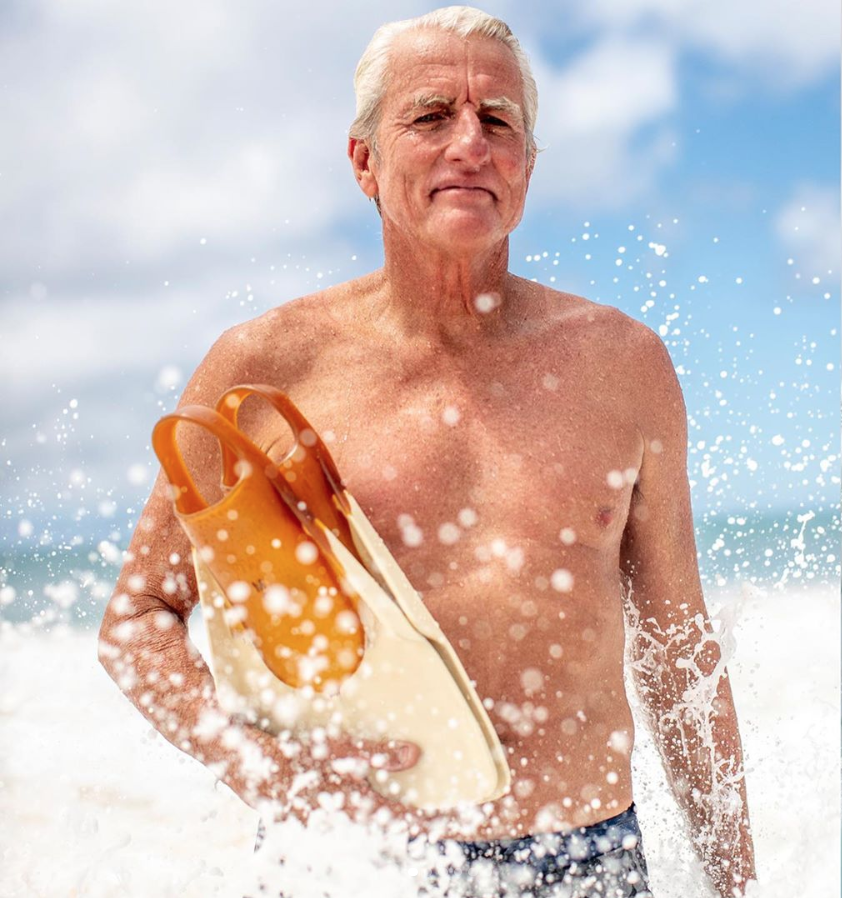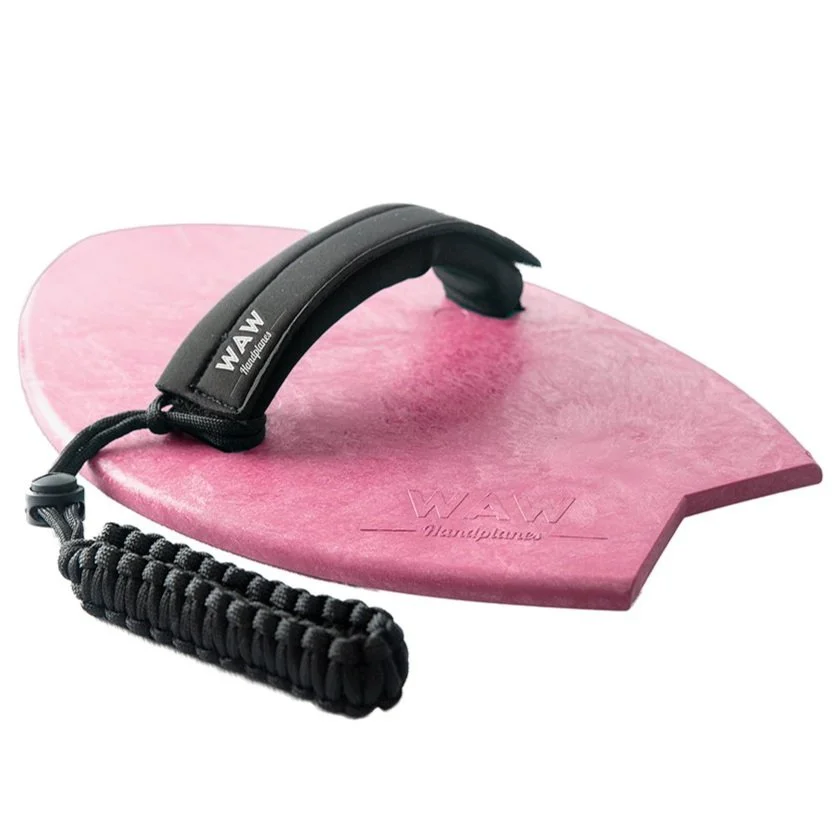By Nick Brbot
Tens of thousands of years before the arrival of the Europeans, native Aboriginal clans enjoyed a close relationship with the ocean and a highly sustainable lifestyle along the Australian coastline. The ocean was their livelihood, using the beach as a source of food and enjoyment they became highly skilled in all ocean related endeavours. In John Odgen’s novel Saltwater People of the Broken Bays it was noted that through their canoe culture they would take their craft out in large surf. Their canoes in fact had a very close resemblance to the modern-day surf ski, which enabled them to handle the rough seas of the ocean. They were known to fish with spears, lines and hooks and would often dive off rock ledges into the surf. In order to survive the sometimes treacherous coastlines, they mastered the art of surfing the canoes back to the beach. Odgen also claims that ''They could body surf, and many people regard that as the purest form of surfing.'' In the 1999 award winning Indigenous surfing film, “Surfing the Healing Wave,” Fingal resident, Kyle Slabb affirms the connection of the Indigenous peoples with the ocean. “When Aboriginal people are in the ocean, they know they are in their country. They belong to it. They don’t own it… we know there’s always another wave. Surfing is about being part of the wave.”
Bodysurfing is the art of riding a wave using only the body as a planing surface. It is the original and purest form of surfing. It could be very possible that humans were inspired by the wave-riding animals of the sea such as dolphins and seals. Ingrained into Dreamtime culture, bodysurfing has its origins also date back thousands of years in the Hawaiian culture. It has been said that even Captain James Cook fell in love with bodysurfing as he learnt from the Polynesians on his explorations in the Pacific Islands. Over time, bodysurfing has seen its ups and downs in popularity but to this day, Mike Stewart, who is widely regarded as one of the greatest watermen of all time, believes that bodysurfing is "the best interaction between man and nature that exists".
The first recorded history of bodysurfing in Australia can be linked to Sport Australia Hall of Fame member Alick Wickham. Wickham was from the Solomon Islands, coming to Australia in 1898, he was working as a 'house-boy' in Sydney. A regular swimmer at the sea-baths at Bronte Beach (Australia's oldest ocean baths) as well as being seen bodysurfing waves around Sydney. He was commonly known as the man who brought the stroke that we now know as 'Freestyle' or 'The Australian Crawl' to the western world, although this style of swimming was already widespread in many parts of the Pacific. Along with this, in 1899, a Polynesian islander by the name of Tommy Tanna, who was brought to Sydney to work as a gardener, taught Australian Fred Williams to bodysurf. Who in turn taught the local "surf-bathers" how to ride waves by bodysurfing. However, in 1902, an Australian law was passed to forbid entry to the ocean during daylight hours. Eventually as more people began to challenge this law it was reversed. The result however, was an increased rate of drownings due to the inexperienced swimmers having problems with unfamiliar surf conditions such as rip currents. The Surf Bathing Association of New South Wales was formed on 18 October 1907 and with this, the potential for bodysurfing as a sport was once again brought alive. Bodysurfing became a mainstay of Australian beach culture, lifesavers generally masters in the art.
It was a few years down the track that the legendary Hawaiian, Duke Kahanamoku, introduced stand up surfing to Australia at Freshwater Beach in Sydney, 1915. However, back then, surfboards were made of Californian redwood and were heavy, difficult to ride and dangerous. At the time, bodysurfing did not require any equipment and was much more popular. On the other side of the world in 1940, Californian Surfer, Owen Churchill introduced the “Duck Feet” swim fins. These were a game changer, enabling bodysurfers to propel themselves onto a more critical part of the wave which in turn allowed them to ride at an angle across the wave rather than straight to the beach. These swim fins became a necessiity for any avid beach goer. However, in 1956, the introduction of the lighter foam Malibu boards shifted the bodysurfing paradigm to the backseat. Bodysurfing was now purely an art to retrieve lost boards from the beach, prior to the invention of the surf leash. In 1971, Tom Morey invented the modern day bodyboard and with the rise of stand up surfing and bodyboarding, bodysurfing fell out of favour by the 70s and 80s. Not disappearing, but not at the popularity as it once was.
Due to the nature of bodysurfing being the least publicised form of surfing, by the 1990s, it was being described as "the lost art,". It offered little to promoters and marketers, always being pushed aside, not having the same impact as board surfing or body boarding. Nonetheless, the art of bodysurfing was being kept alive by a small pocket of enthusiasts globally. Most notably through a Hawaiian Annual Pipeline Bodysurfing Classic and the Oceanside World Bodysurfing Championships held in California. The 1980s were dominated by former Hawaiian lifeguard and bodysurfing legend Mark Cunningham. Cunningham has had a large part to play in keeping bodysurfing alive along with Brian Keaulana and Andy Cochran with their development of the DaFiN bodysurfing fin in the 90s which are currently the most widely used bodysurfing fin world wide. In the 90s there was a also new champion, a change of the guard. Bodyboarding legend Mike Stewart came on to the bodysurfing scene, going toe to toe with Mark and has gone on to win 15 Pipeline Bodysurfing Classics. At the age of 53, he is still a marvel to watch and is the best and most progressive bodysurfer globally.
With the rapid advancement of the digital age in the 2000s, bodysurfing has had a monumental revival. Patagonia and NIXON presented the release of Keith Malloy’s Come Hell or High Water in 2011. The film explored the history and progression of the sport of bodysurfing and the pureness that comes from riding a wave. Taking a unique look into the culture, beauty and simplicity of the sport, whilst capturing the stories and locations of those who belong to its community. The film inspired many to continue bodysurfing and many to begin bodysurfing.
More recently through the medium of social media, bodysurfers worldwide have been able to connect, share photos and develop a large online community. In turn, leading to the development of a bodysurfing industry, where by swim fin companies and handplane shapers have revelled, turning their hobbies into full-time businesses. It has also led to the inception of many more competitions globally. As a sport, bodysurfing continues to grow, with an increasing amount of ties into modern stand up surfing culture, with many professional surfers often leaving their board on the sand and going back to surfings roots. Bodysurfing has even been featured in some of the world’s largest surfing publications.
The past decade has seen a boom in bodysurfing Australia wide. This is evident with the large amount of handplanes and handboards now in the market. They are truly at the forefront of bodysurfing manufacturing worldwide. Groups of bodysurfers of all kinds have been forming, male, female, young and old. From the casual weekend bodysurfing meets, to tackling some of Australia's most infamous and dangerous waves. With an abundance of amazing images and video edits coming out.
In a ploy to bring Australia’s premier bodysurfers together, some Australian bodysurfing competitions have been founded, like The Flat Rock Invitational contest held in Newcastle and over the past decade has brought some of the best bodysurfers from Australia together. The more recent Slyde Fest bodysurfing Comp held on the Gold Coast and most notably the WAW Handplanes l Whomp Off Australia. A team based bodysurfing event whereby teams of bodysurfers grouped into their locations around Australia and the world, gather on the beach and battle it out in four cumulative events, with the winner being crowned The Whomp Off Team Champions. The event has been running every year since 2016. and in 2019 attracted over 140 bodysurfers from around Australia and the world.
Whomp Off Australia Results
2016 event was held on the sandy beaches of North Narrabeen, NSW, and was won by the Wommin Wompers.
2017 event was held on the south coast, NSW and was one by the Bate Bay Body Bashers,
2018 was held in Cronulla, NSW and was won by Team DaFiN from Hawaii and the
2019 event was held at Maroubra Beach, Sydney, NSW, and was again won by Team DaFiN.
Stay Tuned for Whomp Off 2021!
With the interest and hype around bodysurfing both here in Australia and around the world growing exponentially, It is an exciting time for all involved. Bodysurfing is the purest form of surfing, the most accessible and for us the most fun. So get yourself some gear, and get in the ocean and start having some fun.




















